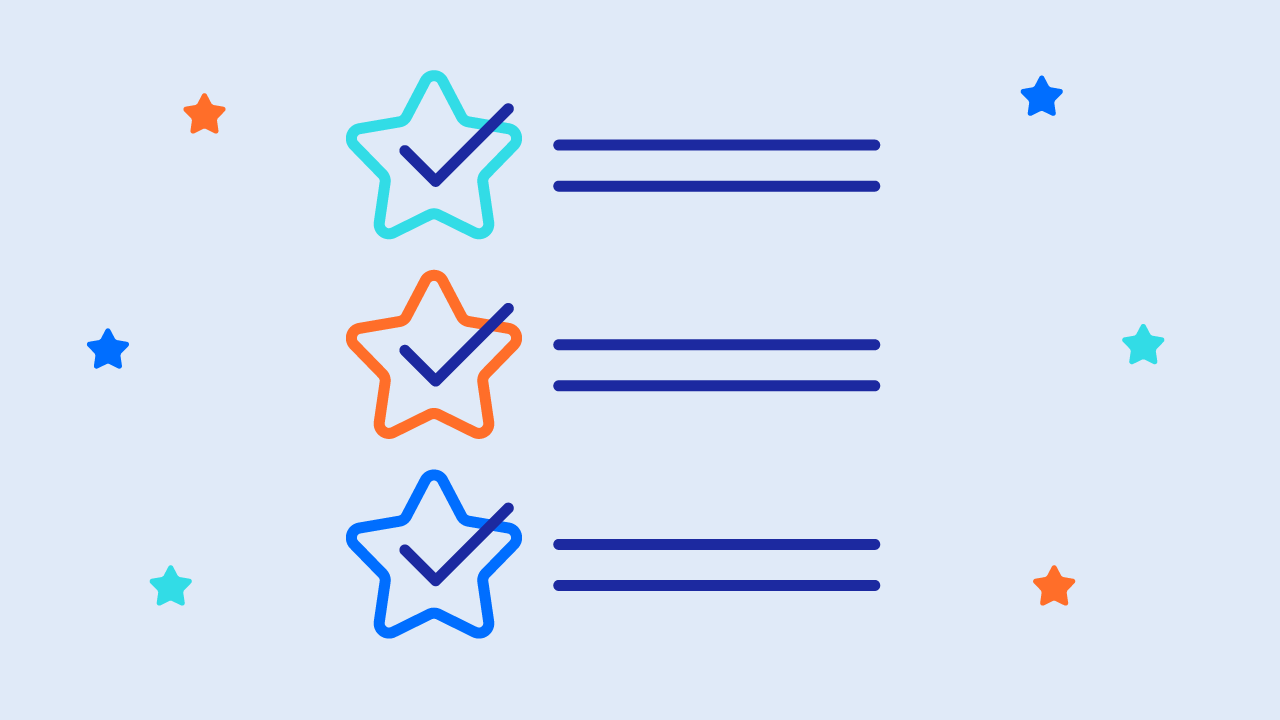According to the most recent Global Comms Report, 92% of communications leaders say the C-suite is seeking their counsel now more than ever.
As executive teams rely more heavily on their PR and communications teams to advise on strategic initiatives that drive reputation – and business outcomes – it is more critical than ever to have comprehensive, reliable data to inform that guidance.
For decades, comms and PR teams have leveraged social and traditional media monitoring to stay abreast of trends and potential risks, and to benchmark overall media visibility and sentiment – over time, versus competitors and against cross-sector peers. What started as hard copy clip books and article tabulations, the media monitoring industry has exploded into a multi-billion-dollar business, as brands and companies look for ways to capture, organize and draw insights from the millions of pieces of digital content that are created every single hour. Fortunately for communicators, there is no shortage of monitoring platform options from which to choose, and the industry continues to expand and modernize, with AI and machine learning providing improved analytical power and more sophisticated automation capabilities. In fact, Fortune Business projects three-fold growth in the monitoring tool market by 2029.
And yet, with so many options available, 50% of communication leaders cite "inability to measure impact effectively" as one of their top challenges, according to the 2024 Global Comms Report. Where is the disconnect?
The Counter Effects of Collaboration Efforts
Ironically, the very thing that should be making PR’s job easier – an abundance of measurement tools – can also create one of the hindrances to effective brand measurement and analysis. Consider some of the side effects when different regions or brand teams are relying upon various, disparate measurement providers – with varied levels of capability and features – to track performance and measure success:
- Redundancies: All those hours poured into updating and managing complex Boolean search queries across internal teams and external agency or provider teams can add up. If you are working from different platforms or with different providers and do not have visibility into what other teams are doing, you may be duplicating efforts – and even spend – without even realizing it.
- Inconsistency: Not all platforms are created equal. Media scope is not always consistent nor representative of target audiences, (particularly in markets across EMEA, where print is still important) the methodology to calculate impressions or reach vary across providers, and different search queries can drive different results for the exact same campaign. If you are working from multiple platforms and providers, you may have teams reporting results differently across the communications function undermining the credibility of reports intended for executive leadership audiences.
- Missed opportunities: If you are relying upon agency teams or your own communications team members to self-report on the success of earned media and social media marketing efforts, you may miss opportunities to leverage data to uncover not only what is working, but what could be improved. What is more, if you are not reporting from a single source of truth from a neutral third-party provider, you may fall victim to grade inflation. Partnering with a reliable, experienced team of communications measurement specialists can help illuminate risks and opportunities proactively and move your team’s culture and focus from “taking credit” to “taking action.”
- Administrative headaches: Working with multiple platforms or vendors means dealing with multiple contracts. Keeping track of all the moving pieces regarding terms, limitations and recurring costs introduces unnecessary administrative challenges and takes time away from deriving value from partners.
How Consolidating Creates a Win-Win
With so much content to parse through, it is critical that the data is centrally located and managed, the metrics are comprehensive, consistent, organized and meaningful, and the teams are empowered and enabled to derive meaningful, actionable insight to help them prove value and improve performance. For many teams, choosing a single, global partner to help deliver consolidated monitoring along with strategic reporting and actionable insight is the answer.
Consider the following time- and cost-saving benefits of working with one partner to streamline your measurement and analytics efforts:
Offset the investment by uncovering redundant spend: One of the key challenges to centralizing monitoring and measurement efforts is unlocking budget to invest in a broader solution that meets most needs across all internal business partners. Conducting an audit to uncover duplicative platform and service costs across businesses and markets, as well as embedded costs within agency contract retainers, can help not only fund a net new consolidated program, but often leads to significant savings and/or increased value-for-dollar. With one multi-national conglomerate, for example, Cision helped consolidate monitoring from 20+ vendors to one, saving over 2 million dollars per year.
A single source of truth: With a single provider, not only are you reducing duplicative spend, but you can be confident you are establishing consistent benchmarks across the organization and drive toward metrics that inform decisions based on a common, shared set of data.
Outcome-focused team alignment: Having a single source of truth for your data unlocks an opportunity to develop clear, consistent and cohesive key metrics and objectives for your teams. Standard KPIs aligned with broader business goals allow comms teams to prioritize activities which have the greatest potential to impact key results, driving efficiency and instilling a culture of bias toward action and impact.
Clear roles and responsibilities: In selecting a provider who specializes in setting up and maintaining your analysis program – across teams, data sources and markets – you can ensure that your team members and agency partners can focus on what they do best and are uniquely qualified to do.
The ROI of Centralizing Media Measurement
Whenever it comes to implementing new partnerships or enhancing a current set up, the inevitable question that arises is, “What will it cost?” But perhaps a better question is, “What am I truly investing in?” Because when it comes to investing in a centralized media measurement solution, it is important to think of it as just that: an investment – not only in your team and a better workflow, but in the quality of data and analysis you are able to deliver and act upon. In short, it’s an investment in everything you touch that will have a direct impact on your brand.
In terms of deciphering how a centralized media measurement solution will pay off, start by conducting an audit of the true cost of monitoring and analysis across your businesses – including brand teams, regions and even departments – to establish a budget.
Ensure that you are looking at line items related to not only platform costs, but those related to agency fees and internal time spent by team members project managing these solutions. Many organizations and agencies leverage interns and entry-level staffers to manage monitoring and measurement platforms. The estimated base salary for a junior communications staffer is $55,600, according to Payscale – and this does not account for the full cost of recruiting, hiring and onboarding an employee, nor does it account for the complexity of tasks required for the job (and the more advanced the skill set you need, the higher the paycheck will need to be).
These disparate costs may not look like much on the surface, but they add up quickly – and often to a higher price tag than a consolidated solution, with one contract, managed by one team of highly specialized SMEs.
In short, not only are you ultimately saving money in the long term, but you’re simultaneously investing in your organization’s biggest financial asset – your brand.
Finding the Right Partner
Of course, streamlining measurement programs is not as simple as deciding on one partner, but choosing the right partner for your team - and your team’s unique goals and needs. We recommend the following four guidelines for finding a good partner for your needs:
- Expect back-and-forth dialogue to arrive at the right solution. A good solution partner will ask questions and take the time to understand your distinctive use cases and unique wants, needs and pain points to create a custom solution that meets your organization’s needs and budget. For complex multinationals there is rarely an “off-the-shelf" software solution that fits the bill. In other words, if it sounds too good or too easy to be true, it probably is.
- Ask about flexibility. Is the solution scalable to your team size, needs and budget? Is it adaptable to changing goals or priorities? A true measurement partner will work with you and be agile as your needs change or evolve. Even better, the best providers will guide you toward new ideas, use cases and best practices as your relationship deepens and they learn how to anticipate your needs.
- Look at their list of clients and ask for case studies. Seek out a partner with a proven track record of success for businesses of your global scope and scale – ideally in your industry vertical, where expertise can play a role in insights development. If budget allows, run a paid trial or commission a landscape study to get a hands-on feel for the team and capabilities while jump-starting your year-over-year benchmarking capabilities.
- Consider the human element. A flashy platform is only as valuable as the people behind it. It is a red flag if you are not engaging with the people with whom you will be partnering day-to-day. Ask questions and make sure you will be supported by a knowledgeable customer service team with myriad resources to ensure success with your platform.
The Bottom Line
Organizations of all sizes and industries stand to benefit from shared data collaboration workspaces — especially in today’s hybrid work environment. Outside of the cost savings offered by a consolidated approach, having a ‘single source of truth’ unlocks greater opportunity for collaboration and alignment, allows for stronger, more transparent communication and enables productivity and smarter business initiatives.
Find out why leading teams rely on CisionOne for a comprehensive approach to media monitoring, PR measurement, outreach and more. Explore CisionOne today or schedule time to speak to an expert.








